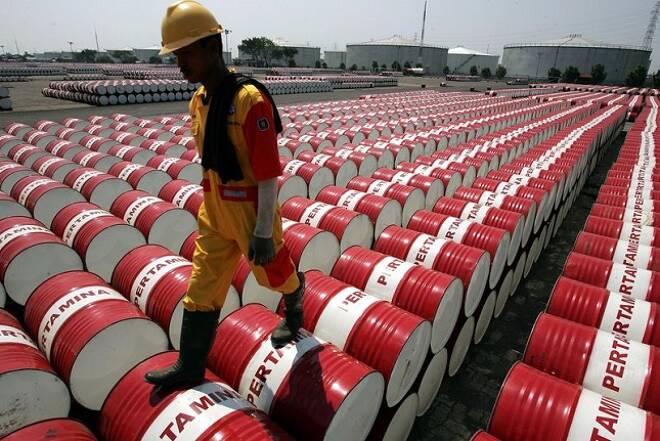Advertisement
Advertisement
Oil Prices Drop as Production Climbs
By:
As the US dollar rallied and data across America said that country’s economy was moving in the right direction and that a recession was not in the cards,
As the US dollar rallied and data across America said that country’s economy was moving in the right direction and that a recession was not in the cards, oil prices tumbled as the rest of the world seemed to not doing as well. The IMF rolled back global growth estimates while PMI data from the UK upset the outlook that Brexit was having little hard on the UK economy. Oil tumbled hard this week with WTI falling to 44.23 seeing a weekly decline of almost 4%. WTI Crude oil is trading at 44.05 down 0.35% while Brent oil did not fare much better as it closed the week at 45.73. and currently trading at 45.95. US crude and gasoline supplies are at the highest seasonal levels in at least two decades, according to data from the Energy Information Administration. Record June motor fuel consumption wasn’t enough to make a dent in inventories that ended the month at the highest since 1984 for this time of year. The summer driving season ends September 5 on Labor Day.
[wibbitz]bbea26d9f6b8147839b6cc4048ba84e43[/wibbitz]
Oil has fluctuated between about $44 and $52 a barrel since early June after almost doubling from a 12-year low in February as supply disruptions from Nigeria to Canada and falling US output trim a global surplus. While American crude stockpiles slid for a record ninth week through July 15, they still remain more than 100 million barrels above the five-year average.
“One of the things the market has to contend with right now is a very, very high level of inventory,” Michael Cohen, an analyst at Barclays Plc, said in a Bloomberg television interview. “It’s very much higher than where we should be at this time of year.”
US crude inventories dropped by 2.34 million barrels last week to 519.5 million, the EIA reported Wednesday. Gasoline stockpiles rose to 241 million barrels, the highest level since April, while crude production gained for a second week.
Petroleum companies boosted the US oil rig count by 14 for the week ending Jul 22, the fourth straight week to see an increase, Baker Hughes reported.
The data came on the heels of a US petroleum inventory report Wednesday that showed higher gasoline inventories.
“Crude is heading lower into the weekend as supply glut fears persist, while further endorsement of a sell-off is provided by a stronger dollar,” said Matt Smith of Clipper Data.
Global crude markets showed resilience in June when both Brent and WTI rallied to a 2016 high above $51/bbl., due to continuing outages in Nigeria and Canada, as well as a 1.7% decline in U.S. production. Global output fell by approximately 800,000 bbpd in May, despite Russian output of 10.83 MMbpd, just short of a record high. Since the lifting of the U.S. oil export ban, the differential between WTI ($48.84) and Brent ($50.25) has become less of a factor, with a price difference of just $1.41 at the time of writing.
The stability in crude prices caused the U.S. rotary rig count to rebound, to average 417 units in June, an increase of about 2%. An uptick in offshore activity helped push the average international rig count up to 1,004 in May, an increase of 2%.
On the bearish side inflated products stocks on a global level, abysmal refining margins, lackluster refiner inputs, more evidence of ‘flattening’ U.S. output via the rig count and production data and strong output from core OPEC + Russia continue to weigh on the market and limit upside risk. More specifically, Libya’s loading of a 600k bbl. tanker from its Hariga port on Wednesday also added pressure this week by slightly reducing supply strain from one of the markets consistent under performers. In currencies the DXY’s 4-month high print this week at 97.23 was bearish for oil while the EUR/USD was mostly flat trading between 1.1000 and 1.1050. As for flows, sentiment in the market remains largely negative as evidenced by five straight weeks of net selling of ICE Brent by hedge funds.
About the Author
Barry Normanauthor
Advertisement
